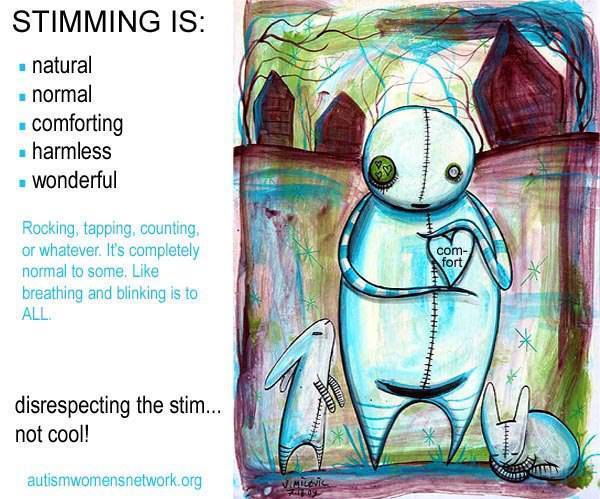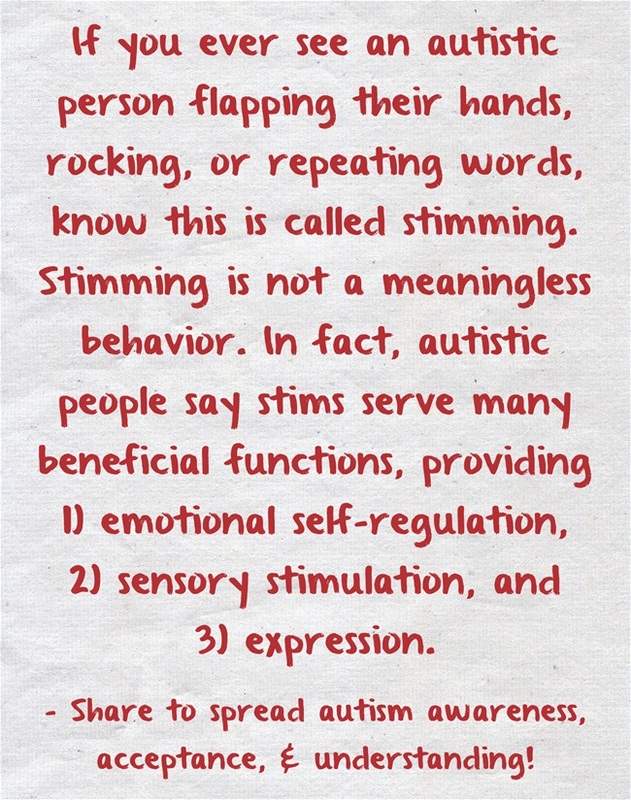Basically, the mother was asking about the differing opinions she hears about stimming. Some professionals will say it's a bad thing and will keep her child from learning. Other people (like me in the article) say you should let your child stim. She felt stuck in the middle. She wanted to let her child stim, but she was scared that some day she'd look back and worry that stimming interfered with his learning process. I replied to her, but I thought this was something many of you may benefit from as well. So here's my response:
"Sorry it took me so long to get back to you - I don't get alerts for comments on the website, only on Facebook. I've heard it both ways, too, and it's hard. So what I did was I went on WrongPlanet.net, an online forum for autistic adults and I asked them what they thought about these claims that stimming was bad for them. I'd REALLY recommend you read through their answers:
http://www.wrongplanet.net/forums/viewtopic.php?t=254039
If you don't have time to read, here's the brief summary. They're pretty overwhelmingly in favor of allowing stimming. I particularly liked what Vicky Gleitz, who gave me permission to use her quote, said. "When I stim, happy becomes happier. When I stim, creatively, entire worlds in vivid detail pop into my mind. When I stim, scary goes away [or at least gets smaller] as does confussion. When I stim, I'm fairly sure that my IQ rises significantly. Just thinking about how so many want to inhibit our autisticness I get so angry, Thankfuly, I am able to stim when this happens. And that helps."
I hope this helps!!!!!!! Let me know if you have any more questions!"
What do you guys think? Do you have any concerns or questions about stimming?
-Creigh


 RSS Feed
RSS Feed
